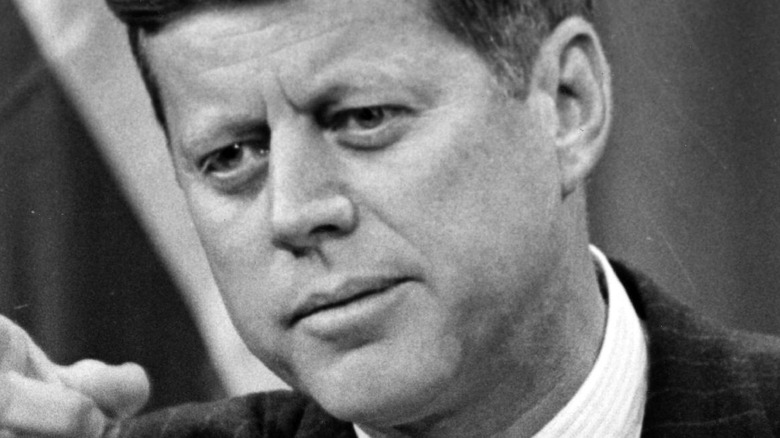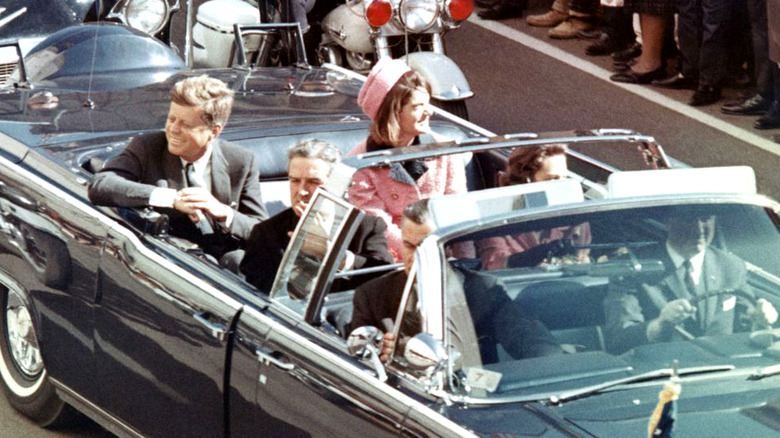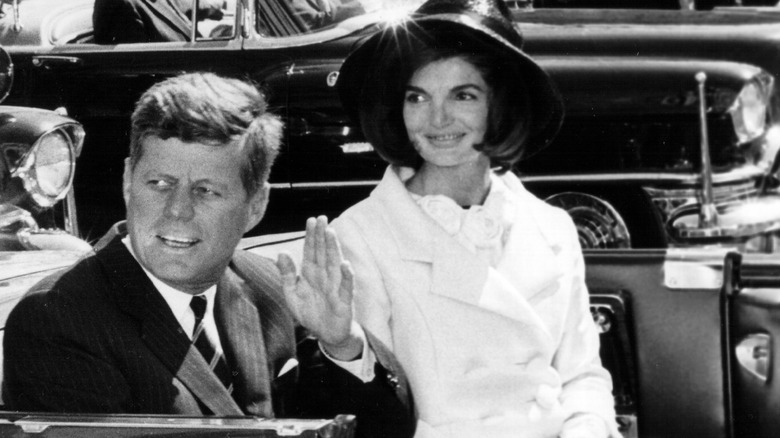The Car Salesman Who Didn't Escape JFK's Assassination Unscathed
November 22, 1963, will go down as one of the most infamous days in American history. On that day, President John F. Kennedy, the 35th president of the United States, was shot in Dallas, Texas (via Britannica). Kennedy was rushed to the hospital, where he was pronounced dead. Shortly thereafter, the suspected assassin, Lee Harvey Oswald, was caught, though he himself would be murdered two days later while still in police custody, as History writes.
Because Kennedy was riding in a motorcade at the time of the shooting, there were hundreds of witnesses to his assassination. Later, TV stations featured wall-to-wall coverage of the event for several days straight, in what one media historian describes as the first time Americans united together around their TVs (via PBS). Actions by Kennedy's wife also impressed the moment into the public memory: Jackie reportedly decided to keep her bloodstained pink suit on, even after her husband had been declared dead, so that people could "see what they've done," according to Honey Nine.
In the decades since Kennedy was assassinated, official inquiries have found mixed conclusions as to whether Oswald was the only shooter or if there was a second gunman. This and other seeming inconsistencies, has allowed the growth of conspiracy theories about the assassination, as Britannica notes. But, for all that the JFK assassination remains commonly discussed, one group of individuals aren't often spoken about: the other people, including a car salesman named James Tague, who were injured on November 22, 1963.
The day of the shooting
When John F. Kennedy was shot, he was riding in a motorcade as part of a public appearance in Dallas, Texas (via the John F. Kennedy Presidential Library and Museum). The visit to Texas was part of his build-up for the 1964 election season. He started off his trip in San Antonio, then moved to Fort Worth, and was riding in the motorcade in Dallas at 12:30 p.m. on November 22, when he was shot. Kennedy was hit twice, once in the head and once in the neck, according to Britannica.
Though Kennedy was the highest-profile victim of the attack, he wasn't the only one. Riding in the car with JFK and Jackie Kennedy was John Connally, the governor of Texas, and his own wife (pictured). Connally was hit by at least one bullet and sustained injuries in the back, wrist, chest, and leg, according to History. Connally went on to survive the shooting, dying in 1993 at the age of 76 (via The New York Times).
Other victims include a policeman named J.D. Tippit, who was shot by Lee Harvey Oswald shortly after the assassination. Tippit, seeing Oswald matched a description of a potential suspect, confronted him, and was killed.
The car salesman who was injured
Though John F. Kennedy, John Connally, and J.D. Tippit were all shot during the assassination, someone else escaped with a narrow miss. James Tague, a car salesman, didn't know much about Kennedy's visit when he ran into a major traffic jam around midday near downtown Dallas (via History). When Tague got out of his car to investigate the cause of the jam, he was struck in the face by a flying object. A piece of the sidewalk had splintered off the curb and been launched into the air by a misdirected bullet.
Tague later shared his story in front of the Warren Commission, who investigated the culprits behind the assassination. His testimony cast doubt over their initial theory that only three shots were fired, all of which hit individuals in the presidential limousine, according to the Richmond Times-Dispatch. Tague said he believed it was his testimony that spurred investigators to formulate their magic bullet theory.
Initially, Tague was willing to believe the Commission's story, according to History. But, over time he became more skeptical. Before his death in 2014, Tague became a JFK researcher who believed that Kennedy was killed by a hired assassin as part of a governmental conspiracy (via the Richmond Times-Dispatch). He has written multiple books about his theories, including the 2003 "Truth Withheld: A Survivor's Story" and 2013's "LBJ and the Kennedy Killing."


